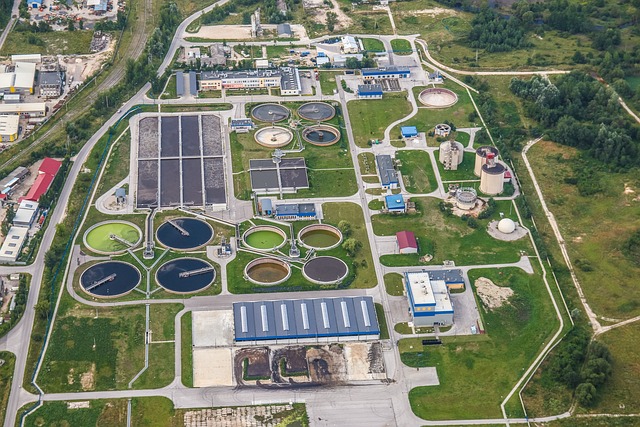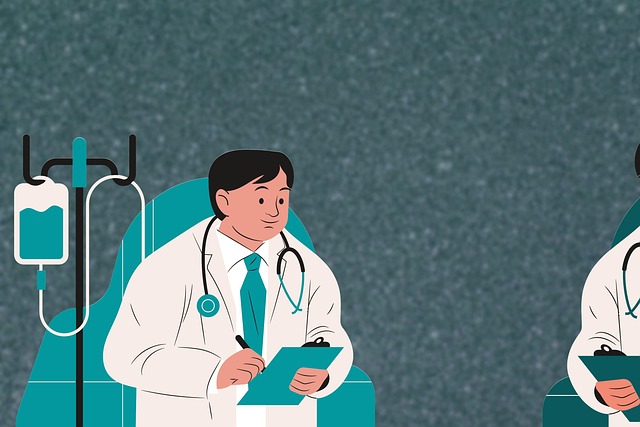First responders at high risk of PTSD due to frequent trauma exposure. Recognizing signs vital for daily life, relationships. Specialized PTSD treatment (CBT, EMDR, group therapy) equips coping strategies, helps process traumatic memories effectively. Stigma complicates access, impeding well-being, performance. CBT and EMDR therapies heal first responders through thought pattern changes, memory processing, stress management. Support groups foster community, offer insights, encouragement for resilience during treatment. Building resilience equips first responders with effective coping strategies for long-term mental well-being.
First responders, including police officers, firefighters, and paramedics, often face traumatic situations on a regular basis. As a result, Post-Traumatic Stress Disorder (PTSD) is prevalent among this group, impacting their mental health and well-being. This article explores the unique challenges first responders encounter and delves into effective PTSD therapy options tailored to their needs. From understanding the condition to discovering powerful healing techniques like CBT, EMDR, and peer support groups, we provide insights into comprehensive PTSD treatment strategies designed to help these brave individuals.
Understanding PTSD in First Responders

Post-traumatic stress disorder (PTSD) is a common yet profound condition that affects many first responders, such as firefighters, paramedics, and law enforcement officers, who are frequently exposed to highly stressful and traumatic events. Unlike ordinary stress or anxiety, PTSD is a complex mental health issue that occurs when an individual experiences or witnesses a life-threatening event, leading to intense feelings of fear, helplessness, or horror. This condition can have significant impacts on first responders’ daily lives, relationships, and overall well-being.
Recognizing the signs and symptoms of PTSD in first responders is crucial for providing effective treatment. Common indicators include flashbacks, nightmares, severe anxiety, avoidance behaviors, and heightened irritability. The impact of trauma can be profound, causing long-lasting emotional distress and disrupting an individual’s ability to function normally. Therefore, access to specialized PTSD treatment is essential. Through various therapeutic approaches, such as cognitive behavioral therapy (CBT), eye movement desensitization and reprocessing (EMDR), and group therapy, first responders can learn coping strategies, process traumatic memories, and regain a sense of control over their lives.
Challenges Faced by Emergency Services Personnel

The demanding nature of emergency services work exposes personnel to intense and traumatic situations, leading to a high prevalence of Post-Traumatic Stress Disorder (PTSD) among first responders. These individuals often confront life-threatening scenarios, deal with severe injuries, and witness the devastating consequences of accidents or violence. The constant exposure to such distressing events can take a significant toll on their mental health.
Challenges faced by emergency services personnel include reliving traumatic memories, experiencing heightened anxiety, insomnia, and irritability. They may struggle with emotional detachment from colleagues and loved ones, making it difficult to form close connections. The stigma surrounding mental health issues within some professional circles also adds to the problem, often deterring first responders from seeking necessary PTSD treatment. Overcoming these barriers is crucial for their well-being and ensuring they can effectively perform their vital roles in society.
Common Symptoms of PTSD After Trauma

The impact of trauma on first responders can be profound, leading to Post-Traumatic Stress Disorder (PTSD) if left unaddressed. Common symptoms include flashbacks or intrusive memories of the traumatic event, avoidance behaviors—such as steering clear of places or people that remind them of the trauma—and heightened emotional arousal, causing irritability and difficulty sleeping. These symptoms can significantly disrupt daily life and relationships, making it crucial for first responders to seek professional help.
PTSD treatment plays a vital role in helping individuals manage these symptoms effectively. Through therapy, first responders can learn coping strategies, process traumatic memories, and regain control over their emotional responses. With the right support, they can navigate through the challenging landscape of PTSD and restore balance to their lives.
Effective Therapies for First Responder Healing

Effective therapies play a pivotal role in healing first responders grappling with post-traumatic stress disorder (PTSD). Cognitive Behavioral Therapy (CBT) has emerged as a powerful tool, helping individuals process traumatic memories and challenge negative thought patterns. By reframing distressing experiences and teaching coping strategies, CBT empowers first responders to manage symptoms and regain control of their lives.
Additionally, Eye Movement Desensitization and Reprocessing (EMDR) therapy has gained recognition for its success in treating PTSD. This innovative approach facilitates the processing of traumatic memories while engaging bilateral brain stimulation through eye movements or other rhythmic cues. Through EMDR, first responders can desensitize themselves to distressing recollections, reduce emotional intensity, and achieve a more balanced perspective.
Cognitive Behavioral Therapy (CBT) Approaches

Cognitive Behavioral Therapy (CBT) is a widely recognized and effective approach for PTSD treatment, particularly tailored for first responders. This therapy focuses on identifying and changing negative thought patterns and behaviors that can contribute to or exacerbate post-traumatic stress disorder symptoms. CBT helps individuals challenge and reframe distorted thinking associated with traumatic events, fostering healthier coping mechanisms.
Through structured sessions, first responders learn to manage their PTSD symptoms by acquiring valuable skills in problem-solving, relaxation techniques, and stress management. By confronting and reprocessing traumatic memories, CBT enables participants to reduce the intensity of emotional responses and gain a sense of control over their lives. This evidence-based method has shown remarkable success in helping first responders process trauma and regain a sense of well-being.
Eye Movement Desensitization and Reprocessing (EMDR) Technique

Eye Movement Desensitization and Reprocessing (EMDR) is a highly effective therapy technique specifically designed for treating post-traumatic stress disorder (PTSD). This approach facilitates the brain’s natural healing process after traumatic experiences, making it a valuable tool for first responders dealing with PTSD.
During EMDR therapy, clients focus on distressing memories while simultaneously engaging in bilateral stimulation, such as side-to-side eye movements or tactile taps. This dual attention helps to reprocess and reduce the intensity of these memories, minimizing their emotional impact. As a result, individuals can better manage symptoms like flashbacks, nightmares, and anxiety attacks associated with PTSD. EMDR has gained recognition as a leading evidence-based method for PTSD treatment, offering first responders a promising path toward healing and improved mental well-being.
Support Groups: Power in Peer Connection

Support groups play a crucial role in the journey of healing for first responders dealing with PTSD (PTSD treatment). These peer-led gatherings offer a safe and supportive environment where individuals can connect, share experiences, and understand they are not alone in their struggles. In a world where first responders often put themselves in harm’s way, isolating themselves can become a common tendency. Support groups break down these barriers by fostering a sense of community among peers who’ve experienced similar traumas.
The power of peer connection is undeniable. Members gain valuable insights as they listen to others’ stories, learning that their experiences are valid and shared. This mutual support system provides comfort, encouragement, and practical advice on coping mechanisms. It’s within these intimate settings that first responders can openly discuss challenges, fears, and victories without fear of judgment, ultimately strengthening their resilience during PTSD treatment.
Building Resilience and Coping Strategies

Building resilience is a cornerstone of PTSD therapy for first responders, equipping them with effective coping strategies to navigate the challenges they face. Through tailored therapy sessions, individuals learn to recognize and manage their triggers, developing healthy coping mechanisms to mitigate symptoms. This involves exploring evidence-based techniques like cognitive behavioral therapy (CBT), which helps reframe negative thoughts and behaviors, fostering a sense of control and resilience in the face of trauma.
Additionally, therapies emphasize self-care practices, mindfulness exercises, and stress management techniques, enabling first responders to create personal safety nets. By integrating these strategies into their daily lives, they can enhance their ability to cope with the demands of their roles, improving overall mental well-being and resilience in the long term.
